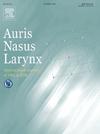日本人工耳蜗植入术的临床特点及术后感染的影响因素。
IF 1.5
4区 医学
Q2 OTORHINOLARYNGOLOGY
引用次数: 0
摘要
目的:本研究旨在评价日本大队列人工耳蜗植入术患者的临床特点,包括同期双侧人工耳蜗植入术次数、术后感染并发症比例及术后感染并发症相关因素。方法:本回顾性队列研究从2010年7月至2021年3月期间日本国家住院患者数据库中提取了9427例人工耳蜗植入的7893例患者的数据。我们确定了人工耳蜗植入的数量、患者年龄、同时双侧手术的数量和感染并发症的发生率。采用多因素logistic回归模型对术后感染相关因素进行分析。结果:到2016年,儿童病例占主导地位,而成人病例从2017年开始超过儿童病例。从2014年开始,年龄在bb0 ~ 1岁零6个月的患者比例逐渐下降。自2016年以来,同期人工耳蜗数量稳步增长。术后感染发生率为4.8%。小儿患者术后感染并发症与手术年龄< 2岁、内耳畸形和中等医院容量显著相关。在成人中,无并发症的慢性中耳炎和合并症糖尿病与术后感染并发症相关。结论:日本患者年龄和同时手术数量的趋势与修订后的指南一致。术后感染发生率为4.8%。儿童和成人患者术后感染的相关因素有所不同。这些发现可能有助于外科医生处理人工耳蜗植入。本文章由计算机程序翻译,如有差异,请以英文原文为准。
Clinical features of cochlear implantation in Japan and factors affecting postoperative infection
Objective
This study aimed to evaluate the clinical features in a large cohort of patients who underwent cochlear implantation in Japan, including the number of simultaneous bilateral cochlear implantation, proportion of postoperative infectious complications, and factors associated with postoperative infectious complications.
Methods
This retrospective cohort study extracted data of 7893 patients who underwent 9427 cochlear implantations from a Japanese national inpatient database between July 2010 and March 2021. We determined the number of cochlear implantations, patient age, number of simultaneous bilateral surgeries, and incidence of infectious complications. The factors associated with postoperative infection were analyzed using a multivariate logistic regression model.
Results
Pediatric cases were predominant until 2016, whereas adult cases surpassed pediatric cases beginning in 2017. The proportion of patients aged > 1 year and 6 months decreased gradually since 2014. The number of simultaneous cochlear implantations increased steadily since 2016. The incidence of postoperative infection was 4.8 %. Postoperative infectious complications were significantly associated with age < 2 years at surgery, inner ear malformations, and medium hospital volumes in pediatric patients. In adults, chronic otitis media and comorbid diabetes mellitus without complications were associated with postoperative infectious complications.
Conclusions
The trends in patient age and the number of simultaneous surgeries in Japan are consistent with the revised guidelines. The incidence of postoperative infections was 4.8 %. The factors associated with postoperative infection differed between pediatric and adult patients. These findings may help surgeons in the management of cochlear implantation.
求助全文
通过发布文献求助,成功后即可免费获取论文全文。
去求助
来源期刊

Auris Nasus Larynx
医学-耳鼻喉科学
CiteScore
3.40
自引率
5.90%
发文量
169
审稿时长
30 days
期刊介绍:
The international journal Auris Nasus Larynx provides the opportunity for rapid, carefully reviewed publications concerning the fundamental and clinical aspects of otorhinolaryngology and related fields. This includes otology, neurotology, bronchoesophagology, laryngology, rhinology, allergology, head and neck medicine and oncologic surgery, maxillofacial and plastic surgery, audiology, speech science.
Original papers, short communications and original case reports can be submitted. Reviews on recent developments are invited regularly and Letters to the Editor commenting on papers or any aspect of Auris Nasus Larynx are welcomed.
Founded in 1973 and previously published by the Society for Promotion of International Otorhinolaryngology, the journal is now the official English-language journal of the Oto-Rhino-Laryngological Society of Japan, Inc. The aim of its new international Editorial Board is to make Auris Nasus Larynx an international forum for high quality research and clinical sciences.
 求助内容:
求助内容: 应助结果提醒方式:
应助结果提醒方式:


